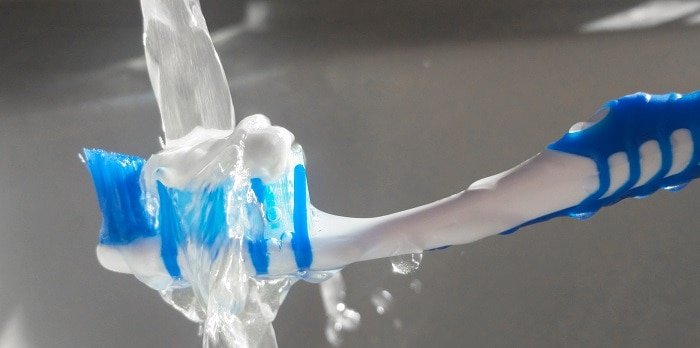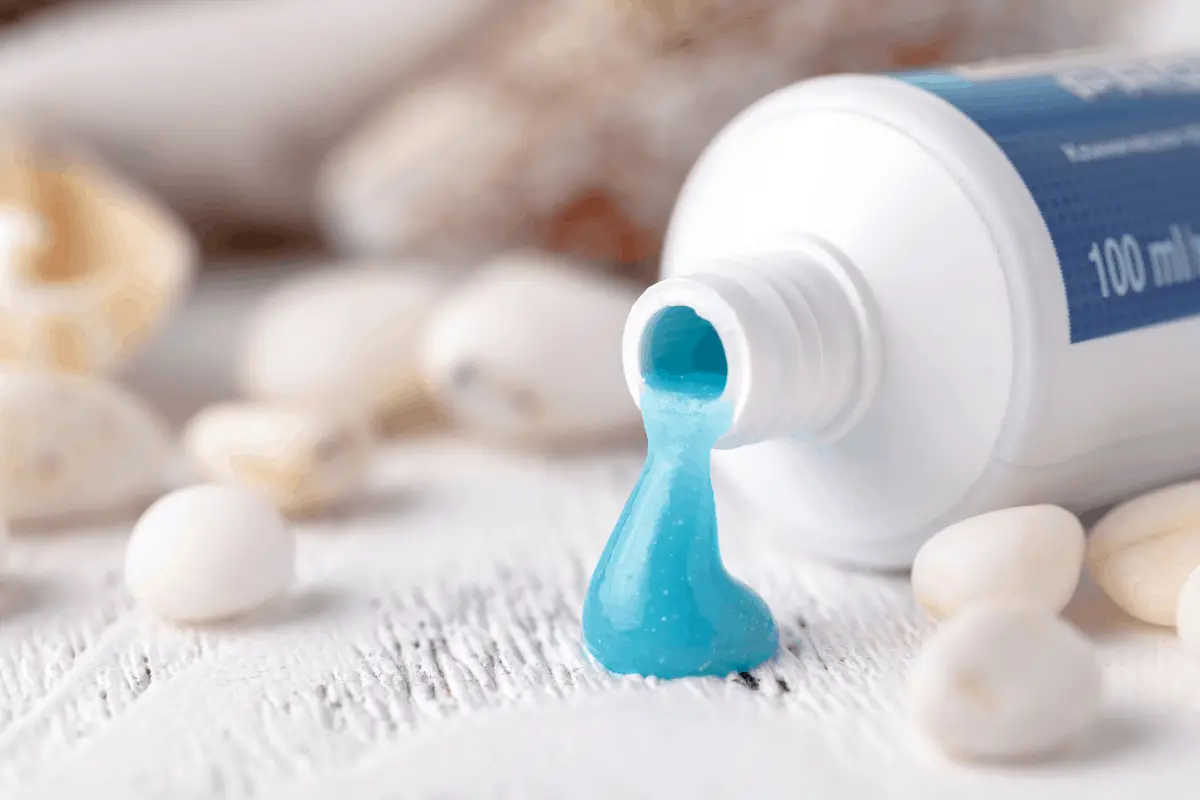Last Updated on October 9, 2024
Toothpaste is one of the common product use along with a brush to keep teeth clean and healthy. It is a substance that helps remove food debris and dental plaque that may be lurking on our teeth. Also, it helps prevent halitosis or bad breath and provides an active ingredient called fluoride to help stop dental caries and gingivitis. Maybe you have asked yourself “what makes toothpaste foam”, “is brushing without toothpaste effective?” Then, let’s try to find out by reading along.
Table of Contents
What Is the Origin of Toothpaste?
The history of toothpaste dates back 5 millenniums ago. Ancient Egyptians, around 3000 to 5000 BC were the first to develop, what was then, the dental cream. This product was made up of eggshells, pumice, myrrh, powder ashes from oxen hooves, and water. Soon, the Greeks and Romans increased more abrasives to the powder mixtures. Meanwhile, China also utilized the powder and added ginseng, herbal mints, and salt to improve flavoring.
The modern toothpaste was developed in the 18th century. The recipe of the toothpaste in the United States and Britain involve burned bread, while other formula includes resin, cinnamon, and burned alum. The addition of fluoride in toothpaste was introduced in the 1890s. In 1900, hydrogen peroxide and baking soda were suggested to use along with a toothbrush as a paste recipe.
What Are the Ingredients That Comprise Modern Toothpaste?
Before we talked about what makes the toothpaste foam, let’s talk about the composition of modern toothpaste, which includes the following:
- Fluoride
Fluoride serves as an anti-caries agent which helps strengthen the enamel of the teeth to prevent tooth decay. This compound can be found in the label as sodium fluoride, sodium monophosphate, or stannous fluoride. By strengthening the enamel of the teeth, it can help resists the acids produced by the bacteria, especially when food debris stays on the surface of the teeth.
- Abrasives
Considered technically as an inactive ingredient, abrasives play a role in the toothpaste by removing food particles and stains from the teeth. One of the simple and common abrasive found in our toothpaste nowadays is sodium bicarbonate. Sodium bicarbonate or also known as baking soda is a mild abrasive that helps remove those unwanted stains. After the application of a toothpaste product that contains sodium bicarbonate, it keeps the mouth staying in an alkaline environment that helps prevent bacteria from proliferating.
- Desensitizing Agents
Toothpaste contains desensitizing agents made especially for sensitive teeth. These desensitizing agents help in alleviating pain and discomfort. Potassium nitrate and stannous fluoride are two of the most common desensitizing agents found in the paste. Both agents work in variable ways; the former helps to minimize sensitivity by depolarizing the nerve cells, while the latter, acts to lessen sensitivity by stopping the dentinal tubules. Other common desensitizing agents are strontium chloride which acts by blocking dentinal tubules as well.

- Antimicrobial Agents
Toothpaste also contains antimicrobial agents. These antimicrobial agents include stannous fluoride which aids in minimizing gingivitis, and pyrophosphates and zinc citrate which helps lessen the deposit of calculus (tartar) in the teeth. Another antimicrobial agent called triclosan has been effective in knocking down bacteria and stopping the formation of plaque.
- Tetrasodium Pyrophosphates
Tetrasodium pyrophosphate is an active ingredient that helps remove tartar from the saliva and protects the teeth from tartar build-up, so it will not form its initial thin coating on the teeth. This can cause hardened dental plaque in the future, if not prevented.
- Humectants
Humectants are flavoring agents that include glycol, glycerol, propylene glycol, and sorbitol. These agents help by averting water loss in the toothpaste.
- Flavoring Agents
Flavoring agent typically originates from sweetening agents like saccharin or sorbitol. These are non-caloric sweeteners that can improve the taste of toothpaste. It is noted that sugar or any other cariogenic ingredients are not allowed to use as a flavoring agent.
What Makes the Toothpaste Foam?
The answer lies in the detergent agent as one of the key ingredients in toothpaste. Detergents are responsible for making the toothpaste foam when brushing the teeth. By creating foaming action during brushing, it aids in the addition of solubility of plaques and accretions. Aside from this, the foaming action supports the distribution of the cleansing ingredients throughout the mouth, between teeth, and may help eliminate plaque and other particles from the mouth.
Sodium lauryl sulfate and sodium N-lauryl sarcosinate are two of the most common detergent agents. Sodium lauryl sulfate (SLS) works excellently because it has mild antibacterial properties, and it doesn’t influence the flavor or the action of other ingredients.
Is Brushing Without Toothpaste Effective?
While it might be a little dreadful scenario leaving a toothbrush behind or doing brushing without toothpaste, however, you might find it surprising that brushing without toothpaste is effective.
According to a research published in the Journal of the American Dental Association, it was observed that there is a 63% reduction in plaque build-up and a 55% drop in bleeding among their patients who underwent six-months of trial for the research. It shows that while brushing your teeth with toothpaste is pleasurable, but practically speaking, it may not be that necessary after all. Plaques and food particles can be removed from the teeth even without the help of toothpaste.

What made toothpaste a necessity during brushing is that it helps the mouth to smell good, strengthen the enamel in the tooth, resist cavity, and aid in addressing several dental concerns such as sensitive teeth and gum disease.
What Is the Best Practice to Brush the Teeth with or Without Toothpaste?
Different practices can be done to brush the teeth even without toothpaste. For a start, you can utilize a dry brush; you can brush at a 45-degree angle to the gum line since it is an effective way to remove plagues that are hanging out near the gums. It is recommended to brush starting on the inside bottom teeth first and then to the inside top teeth; you can also use little circles as well. It is advisable to take your time when brushing your teeth, maybe 1.5 minutes up to 2 minutes will do. You can brush your teeth while in the living room or while watching television; however, it is highly recommended to brush your teeth in your bathroom or in front of the mirror to see areas that might have a stuck food piece or a tooth that starts to have a cavity. Finally, you can feel a smooth feeling once you have done the task effectively.
Brushing your teeth means taking care of your dental health. It doesn’t end with just brushing your teeth but creating a healthy habit in the long run. Limit sugary and acidic foods, have a visit with your dentist at least twice a year, eat fresh and crunchy fruits and vegetables and lastly, avoid smoking to keep your oral cavity healthy and clean.

Lacey is an environmental enthusiast and passionate advocate for living green and sustainable. She believes that everyone can make a difference, no matter how small. Lacey is dedicated to reducing her own carbon footprint and educating others on the importance of living greener. She is an advocate for green energy and sustainable practices. She is an active member of her local community, volunteering with local conservation efforts, and taking part in sustainability initiatives. Lacey is a firm believer that the only way to ensure a sustainable future is to work together and make small, but important changes.

